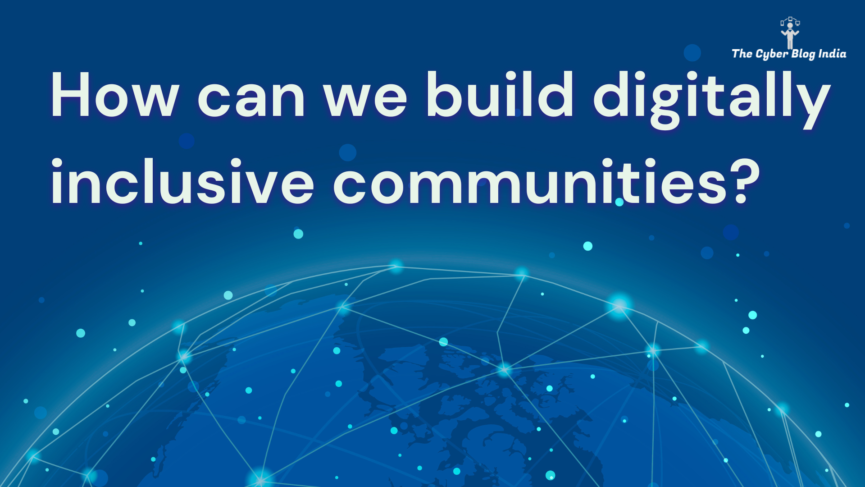How can we build digitally inclusive communities?

Being relegated to the peripherals is a characteristic of exclusivity. If inclusivity is to be genuinely practised, marginalised communities need to be propelled to the centre of the conversation. I lament the lack of digital inclusion of some of India’s most crucial communities. The National Sample Survey Office (NSSO) finds that 70% of rural Indian households do not have internet connectivity. Statistics get grave about marginalised sections, as only 15% of Dalit, 10% of Adivasi, and 25% of Muslim households are digitally included.
Similar numbers exist for women, linguistic, cultural, and queer minorities. Inclusivity online does not limit itself to access to the Internet; it also covers meaningful and safe usage. My previous article covered the penetration of digital goods and services into rural India. In this article, we look at how other relevant communities fit into this space and the relevant policies that cater to their discrimination-free Internet usage.
Women
The gender gap within digital inclusion is not a novel problem. So much literature is available on why women and girls are behind men and boys in their access to digital services. We pick up another tangent to that debate. What about the women who have access to these digital services? The National Crime Records Bureau’s annual reports paint a concerning picture. Cyber crime cases against women and teenagers have shown an increasing trend consistently. Another study by Bumble found that 83% of women have been harassed online in India. Such harassment often leads to self-censorship, a deterioration of the victim’s mental health, and undermines women’s participation in digital spaces.
While legal remedies exist to prevent such discrimination against women online, doubling down on policies that help women flourish online can also be a positive means to remedy this. An example of this is the Internet Saathi Program by Google India and Tata Trusts. It is a digital literacy program that trains women across 300,000 villages to impart crucial internet skills. Most programs by the Indian government, including the Pradhan Mantri Gramin Digital Saksharta Abhiyan (PMGDISHA), have a broader scope of making at least one person per household digitally literate. More targeted programs to improve the online safety of women and children can go a long way in transforming their digital experience. Other government initiatives like Mahila e-Haat offer an online marketing platform to women entrepreneurs across India, adding a meaningful component to their digital usage.
Tribal Communities
According to the 2011 consensus, 8.6% of our population is tribal, and digitalisation is essential to their development. The Pradhan Mantri Vanbandhu Kalyan Yojana (PMVKY) is one scheme that seeks to comprehensively improve the lives of tribal people, including the expansion of telecom connectivity. More recently, the Ministry of Tribal Affairs collaborated with the Indian Space Research Organisation (ISRO) to digitally empower the tribal population across 80 villages in Jharkhand, Madhya Pradesh, Odisha, and Maharashtra.
However, challenges persist; an SRPF paper articulates the demand-side challenges of income and education to tribal digital inclusion. Education, or its lack thereof, prohibits the population from understanding the usability of ICTs. Even though education schemes focusing on digital literacy exist in spaces, we lack quantifiable metrics on their progress and targets. In the absence of proper monitoring and evaluation, understanding the implications of these schemes is hard. Often, the lack of legislative backing for such schemes can also pose a challenge to proper implementation and accountability by the government.
LGBTQIA+
While queer people may get visibility online to assert their identity, they rarely find safety and support. Stories of suicides of queer young adults are proliferating the Internet and point to a need to put an end to such online abuse. Legal remedies aside, a push for more proactive policy development focusing on queer people can go a long way in making them digitally included. Globally recognised organisations like Human Rights Watch have urged Meta to invest more in its safety initiatives for the LGBTQIA+ community to protect them from abuse and digital targeting.
These suggestions align with the outcomes of our 2022 conference on Abuse and Harassment in Cyber Space: Beyond the Perceived Notions of Mainstream.
Conclusion
The three communities we discussed formulate just a few of the many, often intersectional, identities in the country and globally. Making them digitally inclusive is an onus that rests on the shoulders of the government, private players like social media intermediaries, and civil society. Campaigning, partnerships, and policy interventions aside, there is a need to nip these issues in the bud by solving foundational problems of holistic education, employment, and regulatory constraints. Only then will we become truly digitally inclusive.
Remember, if someone is dying for simply (and harmlessly) asserting their identity online, we are doing digital inclusion terribly wrong.
Featured Image Credits: Image by rawpixel.com on Freepik
